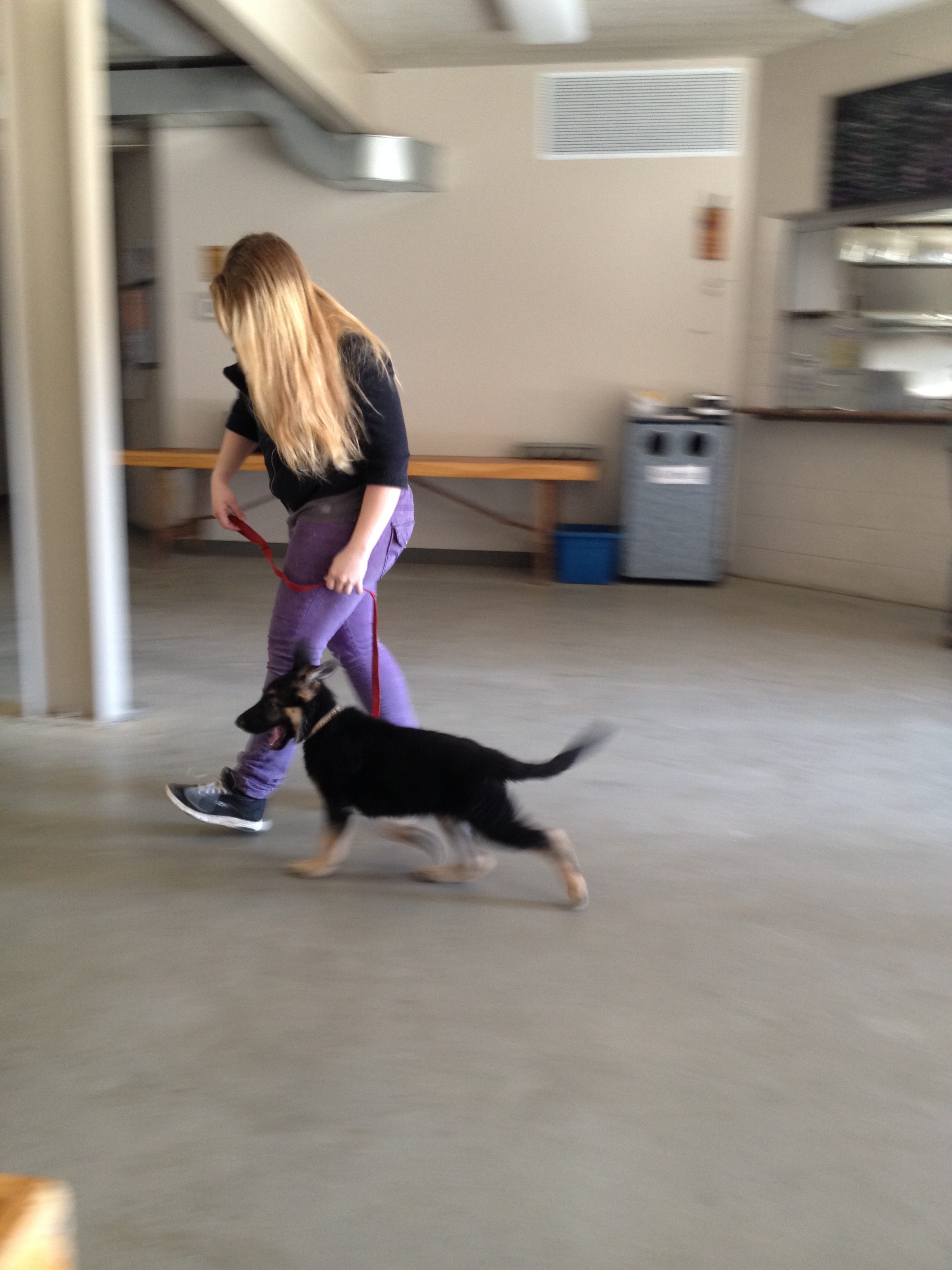How to Teach the Heel?

There are several ways to teach heeling. Before choosing the right one for you it is important to define your objectives.
- Obedience Competition, Rally Obedience, Schutzhund and IPO
- Walking and control in public, especially in crowds
- Control when visiting, going to the vets, or walking to and from the car.
Each of these methods require a different style of heeling.
- Looking to owner for cues. Happy demeanor. Fully following the owner’s lead. While this may appear to be the best method. The dog works ‘with you’ to complete the different tasks. It is stressful and tiring.
- This requires a dog that has been conditioned to walk tight to your leg and ‘wait’ for you to make the first move. The dog follows your lead 100%, is calm, and can sustain this level of concentration for long periods of time.
- This just requires respect for the leash.
Old Dog Training Method
The old method of teaching heeling required a choker collar and leash. The dog was put into position and the owner ‘walked forward.’ Through punishment the dog learned to stay close to the handler’s leg. Any excitement, play or ‘thinking’ resulted in a punishment.
The old method had several flaws. The dog’s cues were 100% subdued. There was no way to communicate with your dog. When things went wrong the problem was explosive. A dog would bolt in the street, attack another dog, or run for its life.
The dog’s fears and frustration often build. The end result is bad behavior. There was no trust between the trainer and dog.
Force Free Dog Training Method
The force free method relies strictly on conditioning. Food and toys are used to build a positive reaction to the action. The training method takes a long time. In many cases this dog remains happier, but often the training is limited. These dogs are often not taught that there is one type of heeling for competition and one type for ‘the real world.’
Training for FF is often done in a sterile environment. This produces unreliable results when in public. The dog’s cues are subdued by the constant focus on food (and the owner). However, in highly stressful situations the handler has an incredible level of control over fear and aggressive based behaviors.
The problem is that many people refuse to use any type of correction. When this is combined with ‘timing’ that is off, or body language problems, it can create frustration.
Clicker and Marker Training
In this type of training the dog receives an auditory or visual cue. This is an effective way of training, and evolves ‘shaping’ good behaviors instead of punishing bad. Communication and relationship is ‘high’ between the handler and the dog.
This type of training also (in my experience) reduces the chances of being reactive. It also creates a very focused and strong heel.
The drawback is that the handler’s timing must be perfect, and they must be able to read dog’s cues.
Luring – Operant Conditioning
These are often used in conjunction with other training methods. They create a ‘high drive’ dog who is very excited when it works. The objective is to create a highly motivated, extremely focused, performance or competition dog.
Keep visiting our blog for more on heeling including more indepth articles and video.
Heeling Primers and Heeling Articles:
Want An Obedient Dog? Stop Yanking The Leash!
